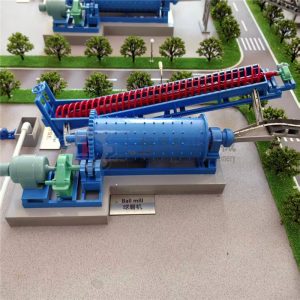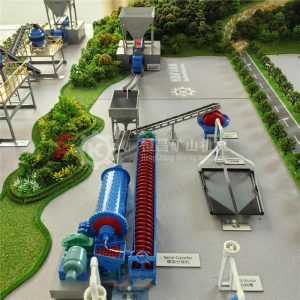What’s the Difference Between Wet and Dry Type Ball Mill Machine?
2025-10-22 17:21:52
I. Differences in Discharge Methods
Wet ball mill:
The discharge is in the form of a slurry, meaning solid particles are suspended in water. This material is typically discharged through a grate or overflow at the discharge end.
The slurry can be directly fed into subsequent wet processes such as flotation, magnetic separation, or concentration and dehydration.
Dry ball mill:
The discharge is in the form of a dry powder, often using pneumatic discharge (such as a combined pneumatic classifier system) or mechanical discharge (such as a screw discharger).
Dust collection equipment (such as a bag filter) is required to collect fine powder and prevent environmental pollution.
It is suitable for processes requiring dry production, such as cement, metallurgical powders, and non-metallic ores.

II. Differences in Grinding Efficiency and Auxiliary Equipment
1. Grinding Efficiency
Wet ball mill:
Grinding efficiency is higher because the presence of water acts as a lubricant and grinding aid, reducing friction between the balls and the material, and between the balls themselves, thereby improving grinding efficiency.
Wet materials flow more easily, facilitating the removal of fine particles and preventing over-grinding.
Wet grinding is more effective for ores with poor grindability and higher hardness.
Dry ball mill:
Grinding efficiency is relatively lower because dry grinding can lead to particle agglomeration and ball smudging, which affects the impact and grinding effect of the balls.
Over-grinding and adhesion are more likely to occur, especially with fine-grained materials.
Dry grinding may be more advantageous for heat-sensitive or easily oxidizable materials (to avoid the effects of water).
2. Auxiliary Equipment Requirements
Wet ball mills:
Requires a water supply system, slurry tank, slurry pump, classifying equipment (such as spiral classifiers and hydrocyclones), thickeners, filters, etc.
The process is relatively complex, but suitable for continuous large-scale production.
Water consumption is high, so wastewater treatment and reuse must be considered.
Dry ball mills:
Often used in conjunction with pneumatic classifying systems (such as turbo classifiers), dust collectors (bag filters/electrostatic precipitators), and conveying equipment (pneumatic conveyors/screw conveyors).
The process emphasizes gas flow and dust control.
While water conservation is recommended, it places high demands on ventilation and dust collection systems, and investment and operating costs may not necessarily be low.
Wet ball mills and dry ball mills are two common types of grinding equipment, with significant differences in their structure, operating principle, applicable materials, and process flow. The selection process requires comprehensive consideration of multiple factors, including material properties, product requirements, process conditions, and investment and operating costs. The following detailed comparison and analysis of wet and dry ball mills focuses on several key aspects, including core structure and discharge method, grinding efficiency and auxiliary equipment, and applicable scenarios, providing a reference for model selection.

III. Differences in Application Scenarios
1. Application Scenarios of Wet Ball Mills
Material State: Suitable for grinding raw ores containing water or materials that can be watered, such as various metal ores (iron, copper, gold, etc.) and non-metallic ores (feldspar, quartz, etc.);
Process Type: Primarily used in wet beneficiation processes, such as flotation, magnetic separation, and pre-gravity grinding;
Product Form: Requires the production of slurry for subsequent chemical or physical separation;
Typical Industries: Mining, metallurgy, chemicals, cement (wet process), ceramic raw material preparation, etc.;
Advantages:
High grinding efficiency, suitable for hard and difficult-to-grind materials;
Easy to control particle size, with minimal over-grinding;
Continuous operation, suitable for large-scale production;
2. Dry Ball Mill Applications
Material Condition: Suitable for materials that cannot be treated with water or that cannot react, oxidize, or deteriorate with water, such as cement raw materials, pulverized coal, metal powders, chemical raw materials, and non-metallic minerals (such as heavy calcium and talc).
Process Type: Suitable for dry production processes such as cement production, powder metallurgy, coatings, ceramics, and refractories.
Product Form: Requires dry, fine powder production, typically requiring subsequent classification and dust collection.
Typical Industries: Cement manufacturing, metallurgical powders, ultrafine non-metallic mineral powder processing, battery materials, and some food and pharmaceutical industries.
Advantages:
No wastewater is generated, making it more environmentally friendly in some applications.
No drainage or wastewater treatment considerations are required.
Suitable for grinding heat-sensitive and easily oxidizable materials.